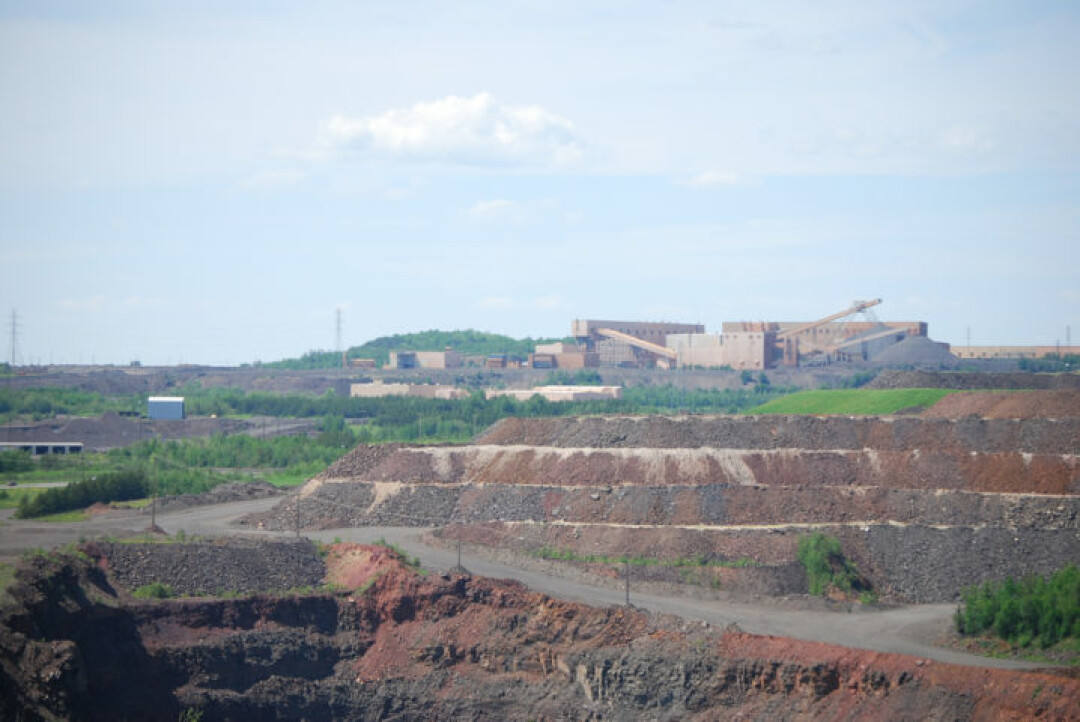MPCA fails to act on mining pollution

U.S. Steel Minntac Mine
The Minnesota Pollution Control Agency (MPCA) is again in the news for turning a blind eye to ongoing water pollution leaving U.S. Steel’s Minntac Mine in northern Minnesota, according to a report in E&E News. Minntac’s violations “would likely have meant a multimillion-dollar fine for U.S. Steel Corp. … and strict requirements for a cleanup,” the report said.
The EPA is declining such penalties because of MPCA indifference. E&E writes: “Records obtained by E&E News under the Freedom of Information Act indicate Minnesota regulators opposed EPA’s proposed enforcement. …
“Leaders of a tribe downstream from Minntac, the Fond du Lac Band of the Lake Superior Chippewa, are angry that the case has gone dark. They’ve tried for decades to fend off pollution to preserve wild rice, a culturally significant staple food that grows in the region’s waters.”
Sandy and Little Sandy lakes, downstream from Minntac, once had 200 acres of wild rice. The rice is gone now.
This is just the latest chapter in MPCA’s decades-long failure to address Minntac’s water pollution violations, a failure apparently stemming from both political pressure and its own timidity.
Whatever the reason, the MPCA is failing to meet its mission: “To protect and improve the environment and human health.”
Particularly galling was the MPCA’s PR spin when questioned by E&E News. “Minnesota Pollution Control Agency officials say they didn’t ignore the pollution. MPCA tried to deal with it in 2018 by drafting a permit to replace the one that expired in 1992.”
Fact check: The MPCA did ignore the problem.
The agency was supposed to renew Minntac’s permit by 1997. So the MPCA was 21 years late in reissuing it while pollution not only continued but got worse.
The mining and ore-refining process requires lots of water. Minntac pumps the polluted water into a “tailings basin.” Polluted water leaves the basin in one of two ways. It seeps from the base of the basin’s dam into nearby surface waters. Water also migrates out of the bottom of the 13-square-mile unlined basin into the shallow aquifer below. This pollution makes its way back into nearby lakes and streams.
Fond du Lac and the environmental group WaterLegacy sued the MPCA to block its draft permit. The state Appeals Court struck down the permit. The case is now before the Minnesota Supreme Court.
Fond du Lac and WaterLegacy want the MPCA to enforce Clean Water Act standards on Minntac’s groundwater pollution because of its real world impacts. Minntac’s sulfate pollution is deadly to wild rice. It appears to be the source of the wild rice die-off in nearby Sandy and Little Sandy lakes.
The MPCA allowed polluted water to seep into surface waters from base of MinnTacs’ dam for decades.
Healing Minnesota Stories wrote extensively in June about the MPCA’s lax oversight of Minntac’s water pollution. Here are a few highlights:
The MPCA failed — and failed spectacularly — to address Minntac’s surface water pollution for years. That problem is now supposed to be fixed.
The MPCA admits to U.S. Steel’s intransigence, and its own failures, in its 2018 draft Minntac permit:
“U.S. Steel has committed several times to lower concentrations of pollutants in basin water and proposed various methods to do so.
“U.S. Steel has failed to implement any of the methods it has proposed or committed to undertake. Under the current circumstances, the MPCA concludes that pollutant concentrations in the Tailings Basin will continue to increase.
“The [water discharge] permit for the facility must be reissued to ensure that continued operation of the facility will protect surrounding waters.”
How is the new permit supposed to be any more effective than the old permit that U.S. Steel effectively ignored?
The MPCA had its hands tied by the legislature in recent years.
The legislature required the MPCA to develop a new (and presumably less stringent) wild rice water quality standard. In 2015, it passed a law preventing the MPCA from requiring mining companies to spend money to reduce pollution in wild rice waters until the new rule was in place. (The new rule still isn’t in place.) The 2015 law went as far to say that the MPCA couldn’t force these companies to clean up their act even if they were violating the federal Clean Water Act.
The latest report from E&E News is disappointing, but not surprising.